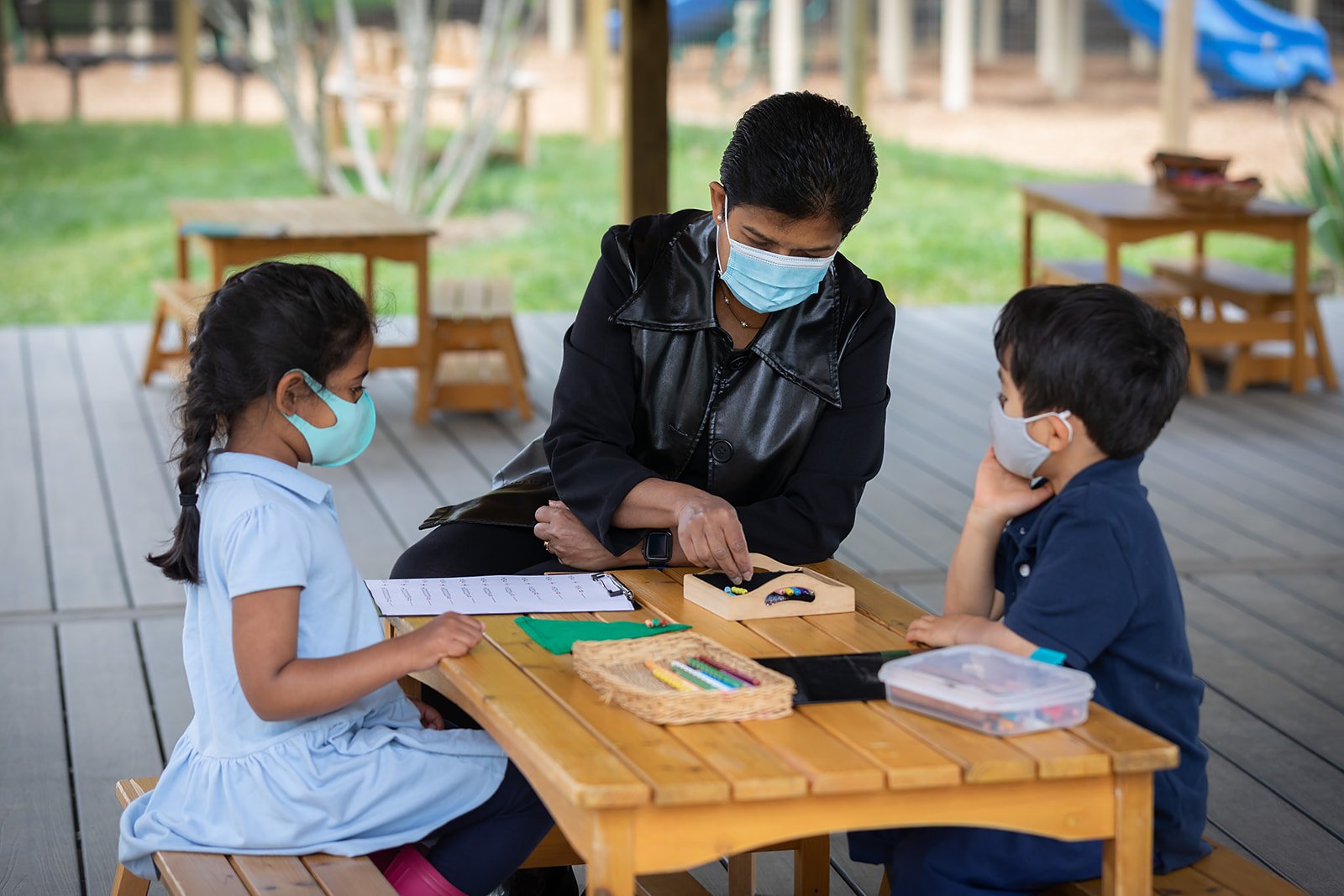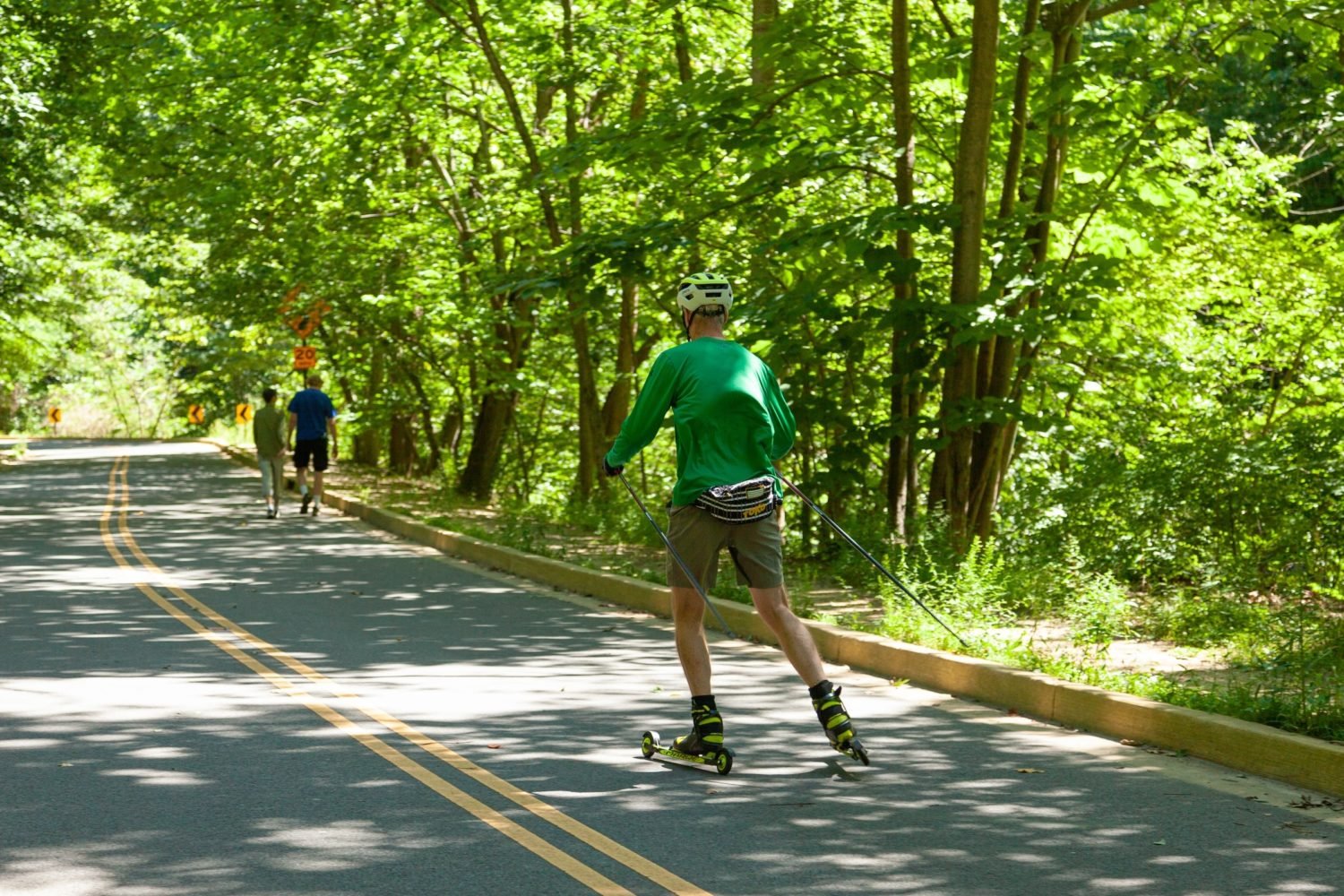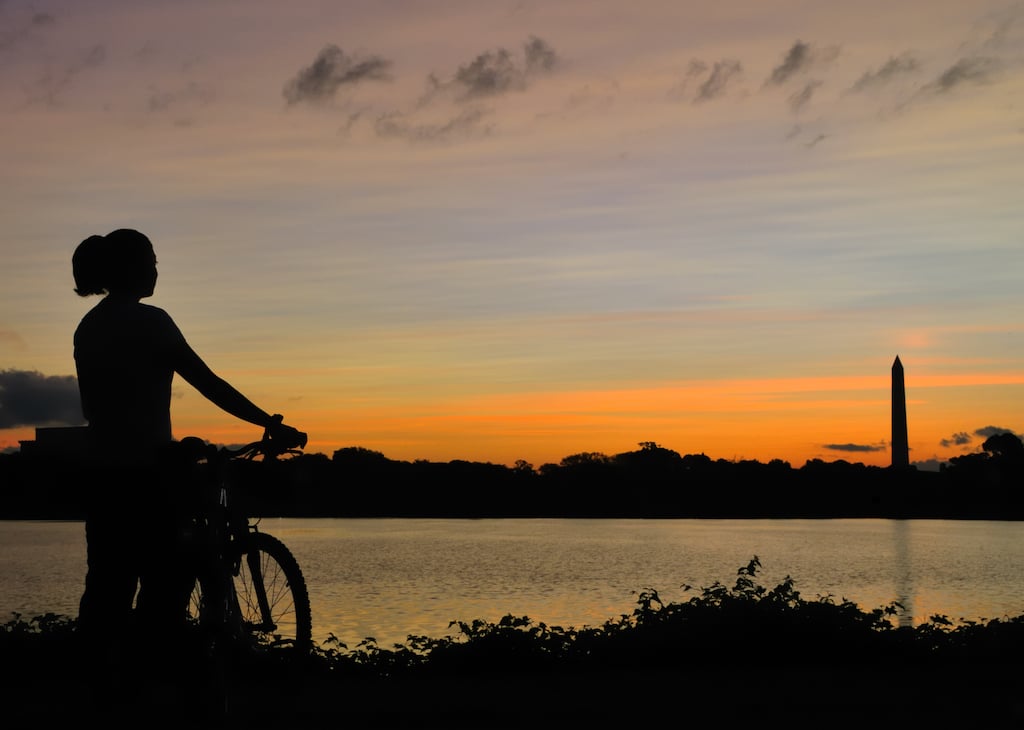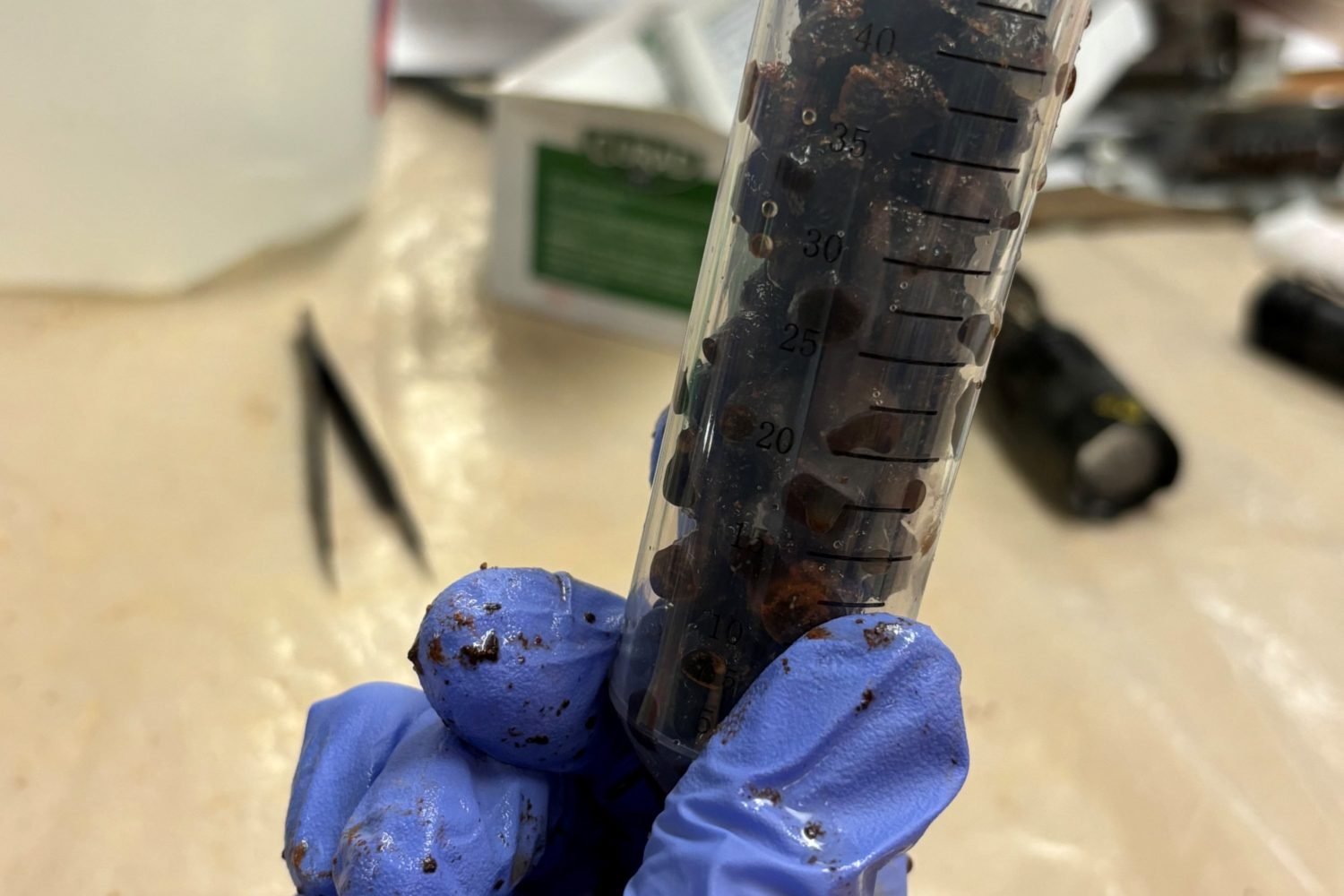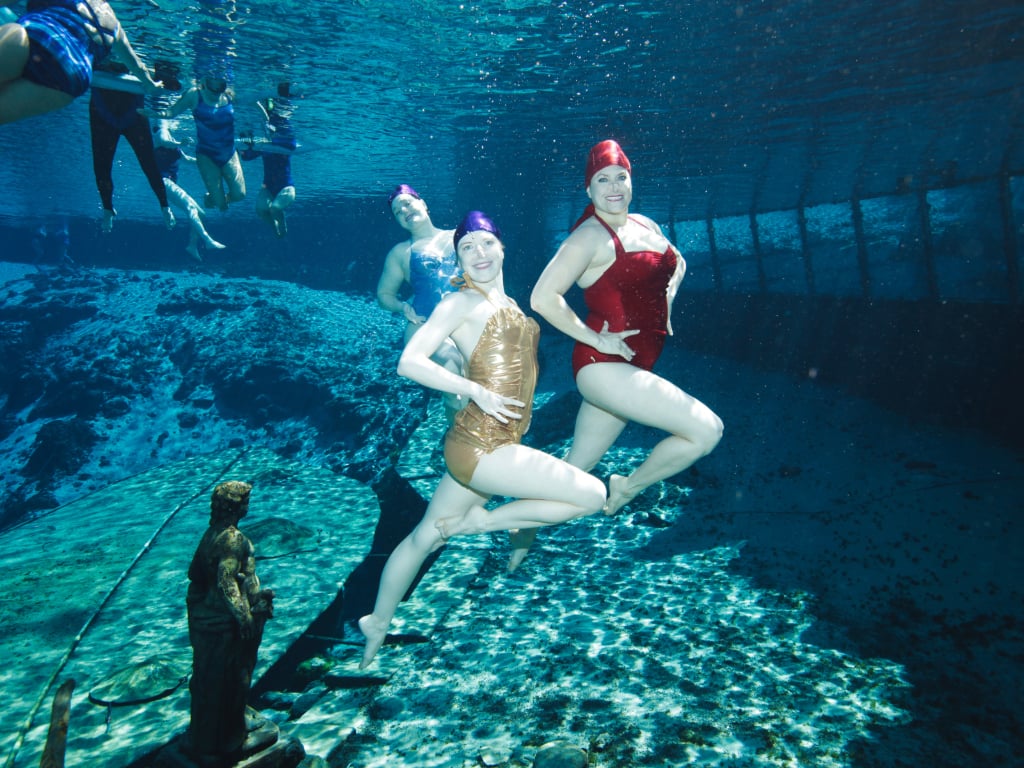Crossway Montessori in Kensington once operated like a typical Montessori preschool—for the most part, the children stayed indoors for lessons, heading outside for breaks.
Then came Covid. The school—hoping to reopen for in-person teaching but to keep kids and staff safe—hired a landscape-design firm to rethink its half-acre campus.
When children arrive each day at what’s now called Crossway Montessori Forest School, they first gather in the newly designed, shaded “Glen,” seated on tree stumps (fashioned from a fallen tree) before fanning out for the day. Perhaps they’ll tend to the chickens in the new coop, grab art materials from the expanded barn, dive into a book in the new outdoor reading nook, or head to the garden to care for the vegetables and flowers. After lunch in the outdoor cafe, they’ll settle down on cots for naps in a new open-sided pavilion.
“We went entirely outdoors because of the pandemic,” says Ann Byrne, Crossway’s head of school. “When we reopened in June 2020, we were outdoor-focused and nature-based. We use the indoor classrooms only during inclement weather.”
There was such demand this year that Crossway added grades one through three on top of its program for younger kids.
“We see such joy in the children being outside,” Byrne says. “Even our staff has said they can’t imagine being inside as much as we were prior to this. The children are so happy and are learning so much.”
Outdoor schools have been popular for decades in places such as Germany and Denmark—Scandinavians subscribe to the Nordic philosophy of friluftsliv, or outdoor life. In this country, they’ve taken root more recently, inspired in part by a 2005 book, Last Child in the Woods, which made the case for kids spending more time outside. The number of nature-and forest-oriented preschools and kindergartens in the US has more than quadrupled over the past five years—from 150 to more than 650—according to the North American Association for Environmental Education.
A global pandemic—when it’s not just safer to be in fresh air, but many have also gained a new appreciation for being outdoors—could cause the trend to mushroom even more. According to NAAEE, at least 65 nature schools opened in the US over the last year. Meanwhile, Byrne says she got more calls than ever this past August from parents looking for a slot.
By the strictest definition, a nature-based school is one that’s not only outdoors but also guided by the outdoors. Kids still learn about music, art, and math, but with the natural world as a prompt.
“The basic premise of the nature-based educational movement is that children are inherently interested in the natural world,” says Stephanie Bozzo, founding director of the 15-year-old Audubon Nature Preschool in Chevy Chase. “We follow the child’s lead about what they want to learn about. ‘You’re interested in the pond right now? You saw a dragonfly? Let’s talk about the life cycle of a dragonfly.’ If, as an educator, you can step back and see what they want to learn, you’re not fighting to teach them something.”
Locally, a handful of schools emphasize nature-focused education, including Epiphany Preschool in Vienna, the Country Day School in McLean, and Takoma Park Cooperative Nursery School. (For a searchable map of some nature preschools in this area, see naturalstart.org.)
For something relatively new, outdoor schooling—known in research circles as environmental education—has already been subjected to a forest’s worth of scholarly study. Researchers at Stanford University evaluated 119 peer-reviewed papers and concluded that such an education has a measurable, positive effect.
Research has found that children who spend more time in nature do better when tested on math, reading, and science; score higher on cognitive measures such as critical thinking and problem solving; engage in more creative play; get along better with others and have greater self-discipline; have better self-esteem; are healthier, less stressed, and more physically active; and even show reduced rates of nearsightedness.
“Human beings were outside in nature for tens of thousands of years before we put them in classrooms,” says Julie Liddle, program director at the Eastern Ridge School in Great Falls. “I think by dramatically reducing the amount of time little humans spend in nature, there are whole experiences their developing brains miss out on. I don’t think drilling kids with worksheets is a way to stimulate a love of learning. Outside, they are more curious.”
Exposure to nature has also been shown to increase focus and to benefit those with attention deficit disorder.
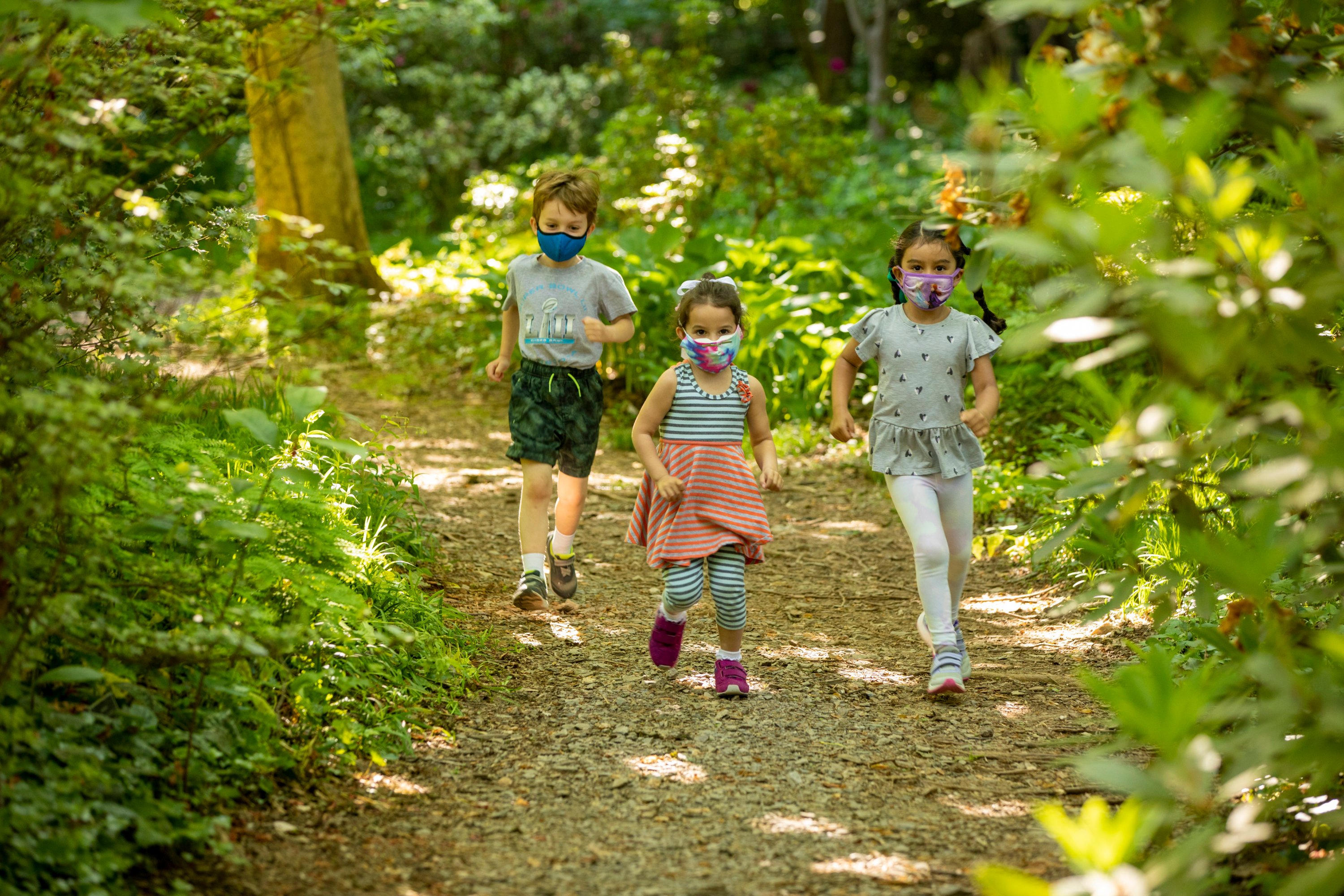
“There’s a great quote by Erin Kenny of Cedarsong, an outdoor school in Washington state: ‘Children cannot bounce off the walls if we take away the walls,’ ” says Bozzo, whose Audubon school sits on a 33-acre campus. “For a lot of preschool educators, this is a huge realization, how different children are when they are outdoors.”
Kids don’t need to be outdoors all day, or immersed in a nature-based curriculum, to reap some of the benefits. Even a bit of time outside daily at a traditional school can have an impact.
At Washington Waldorf School, the high-schoolers now start some days with a half hour of physical activity outside. “Everyone knows that early mornings are tough for teens,” says Lelia True, interim head of the Bethesda school. “We found that by waking up their bodies first, we kind of wake up their minds. That has a definite impact for their readiness when they go in and sit down for the academic portion.”
Outdoor instruction isn’t off-limits to kids with physical challenges. “We’ve had children who have multiple limb amputations participate in our program,” says True.
At the 140-acre Sandy Spring Friends School in Maryland, the pupils—who range from pre-K through high school—typically spent two to three hours of their day outside even before the pandemic, between athletics and lessons. A science class might hatch tadpoles at the pond. The forensics class might set up a “crime scene” outdoors.
Since Covid, says head of school Rodney Glasgow, students may be outside even more: “Most days, unless [the weather is] unbearable, lunch is outside. A lot of classes started incorporating outdoor things. Maybe a discussion they’d usually have in the classroom, they take it outside. The lower school had a Kennedy Center opera truck do a whole performance with the kids seated outside.
“We saw such damaging effects from when kids were quarantined inside,” Glasgow says. “So [with] the combination of coming to school with kids their own age and being able to be outside safely, I saw more joy and relaxation. It was palpable.”
In recent years, many traditional schools have created gardens where students might spend part of the day. During the pandemic, some schools erected tents so classes could be in fresh air. Others thought outside the tent.
The Woods Academy, a Catholic school in Bethesda, had been planning an outdoor classroom for several years—and hosted a fundraiser in March 2020, a week before Covid shut down in-person learning. “Little did we know,” says head of school Joseph Powers, “that this would be something we’d use rather soon.”
The Outdoor Learning Lab, as it’s called, features a small waterfall, rain barrels, a meditation nook, and a sensory garden. For classes, students can sit on wood-beam amphitheater seating; upgraded wi-fi means there’s a signal. The space has been used for reading, small assemblies, music classes, and STEM experiments.
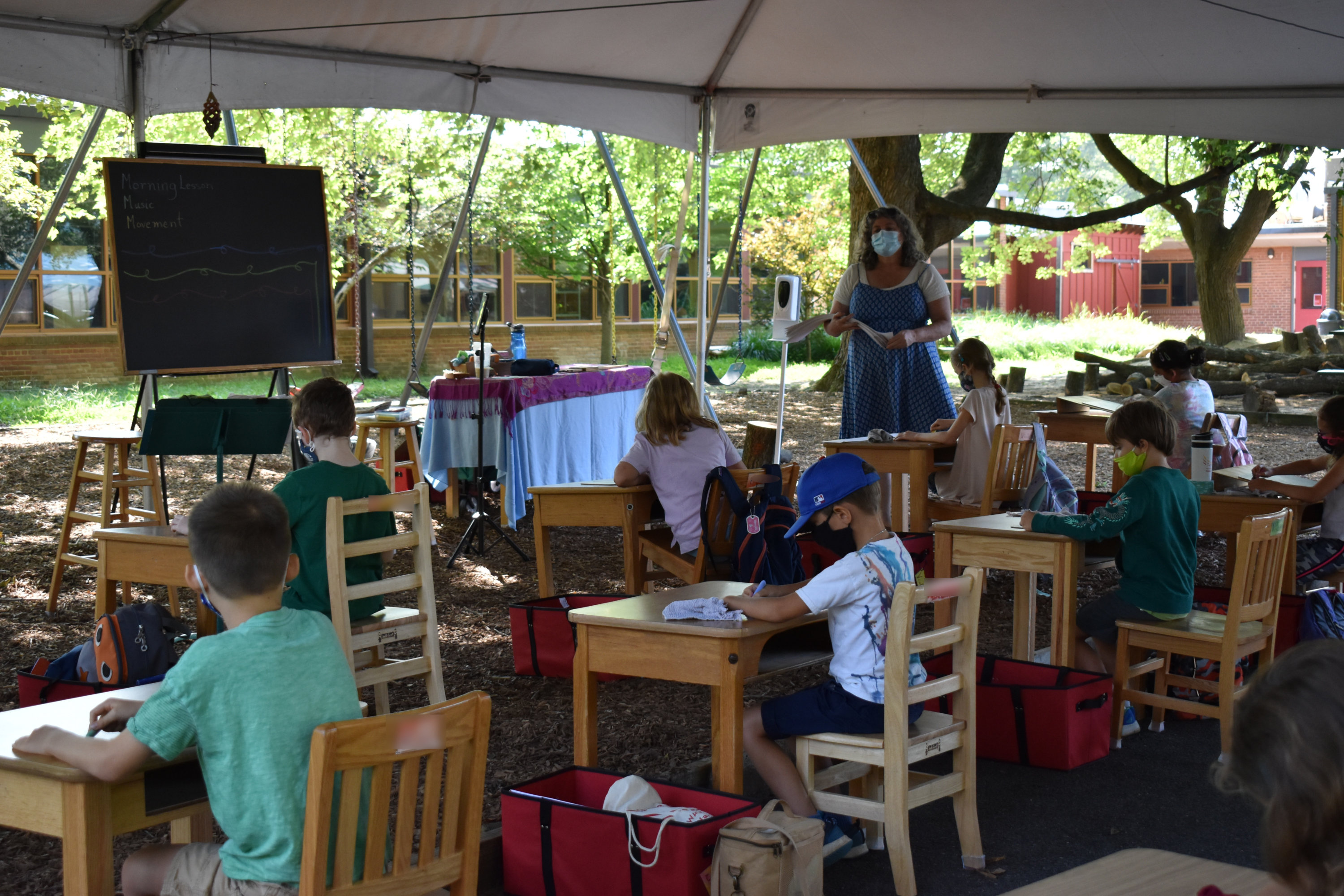
Science teacher Megan Mullally started taking her fifth- and sixth-graders to the outdoor lab as soon as it was finished last spring. “In my fifth-grade class, we have a unit on water cycle and pollinators,” she says. “We spent one whole period outside sitting still to observe pollinators. We had the kids lying on the ground, and we could see bees’ tongues sucking out pollen. That’s the quietest I’ve ever seen them. It was not something I could have done inside.”
Mullally, who takes her students outside any chance she gets—for example, to fire off bottle rockets to understand motion and acceleration—says they’ve been particularly eager to go out during the pandemic: “Their eyes light up. It provides a calming effect. They love being able to spread out, do something hands-on, and get a break from their masks.”
While private schools have more resources and flexibility to move learning outdoors, public schools are tuning in to nature, too.
“Three of my children are in public elementary school—Rock Creek Forest in Chevy Chase—and they have an outdoor space,” says Bozzo. “If they’re working on math worksheets or reading a story, those are so easy to do outside. Until Covid, there has been a lot of hesitation, because teachers in traditional schools don’t have training on how to manage children outside. They’ll say, ‘What if one runs off?’ Children won’t run off—they want to be together.”
Some DC public schools, such as Patterson Elementary in Ward 8, are building outdoor learning areas. What about schools without the acreage or funds to seed gardens or buy tents? Research shows that even tending plants in an indoor classroom—any exposure to nature—helps children thrive.
Still, advocates for environmental education worry that too many children aren’t able to take advantage of outdoor programs. A 2017 report from the Natural Start Alliance found that across nature-based preschools and kindergartens in the US, 83 percent of students were white.
“Far too many inequities remain when it comes to who has access to these enriching programs,” says Sarah Bodor, NAAEE’s director of policy and affiliate relations.
Another upshot of environmental education: “If children fall in love with nature, they grow up to protect it,” Bozzo says.
Unlike a lot of adults, kids don’t appreciate nature just on pleasant days. “If children are warm and dry—and we give extensive gear lists to parents—they prefer to be outside in the rain stomping in puddles,” says Crossway Montessori’s Ann Byrne. “Adults are more inclined to be indoor people than children.”
Nature schools bring kids inside only during severe weather, so parents have to slather on sunscreen and bug spray, or bundle children up, before dropping them off. “There is more burden on parents,” says Eastern Ridge’s Julie Liddle. “There’s more laundry. Kids come home muddy or have to change during the day to get out of wet clothes. And every night at bath time, we encourage parents to do tick checks.”
Letting children run and climb trees can also mean an occasional scraped knee.“There are very seldom Band-Aid injuries,” Byrne says. “The only rule we have is that if the surface is hard, you have to walk. Otherwise we’re not saying, ‘Stop, don’t run!’ The kids are going home tired.”
And happy. “We’ve seen such progress in the children,” Byrne says, “we have no intention of going back to teaching indoors.”
This article appears in the October 2021 issue of Washingtonian.

